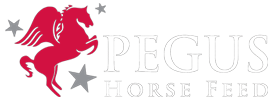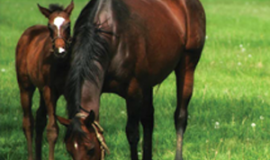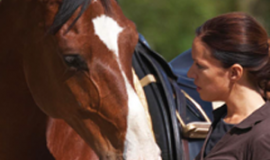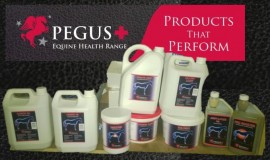Vitamin E and Selenium protect cells from oxidative damage
Vitamin E and selenium function jointly in protecting body cells from oxidation-induced damage. Low levels of selenium can partly be replaced by higher levels of vitamin E and vice versa, but they can never totally replace each other. Selenium deficiency is a constant threat where soils are low in selenium, as in Scandinavia and the British Isles.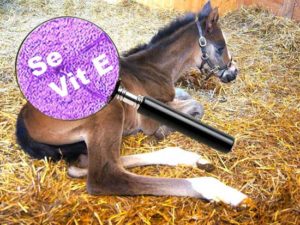
selen-vitaminE
Biological oxidation
In order to extract the chemical energy bound in organic nutrients like fat and carbohydrate, all animals use oxygen from the air in a process called biological oxidation. Carbon dioxide and water are formed as waste products, and the liberated energy is used in the body for, among other things, muscle contraction and growth. During the process of biological oxidation, free radicals – highly reactive agents – are also produced as a side effect. If these radicals are not destroyed, they will damage living cells, notably their lipids and proteins. Unsaturated fatty acids, a major component of all cell membranes, are particularly susceptible to oxidative damage.
Antioxidants
Vitamin E and selenium act as antioxidants by preventing this damage to cell components which will always occur as part of oxidative processes needed to release the energy in our food.
Vitamin E (alfa-tocopherol) is a fat-soluble vitamin. It acts on the lipid-rich membranes of the cells, where it helps to prevent free radicals from damaging these cell structures.
Selenium is a water soluble mineral that is needed in very small quantities (see below). Selenium is part of the intracellular enzyme glutathione peroxidase, which helps to prevent the formation of free radicals and to destroy oxidized lipids (peroxides) in the cells.
The requirements for vitamin E and selenium that are given in the following tables are according to NRC-2007 recommendations.
Vitamin E requirements
The requirements for vitamin E below are based on NRC-2007*. The amount of vitamin E is given as international units (IU) and the requirements are as IU per kg body weight per day. 1 IU is equivalent to 1 mg of the vitamin.
Table 1. Daily requirements for vitamin E, IU per kg body weight.
Type of horse Vitamin E requirement, IU per kg body weight
Idle horses (maintenance) 1.0
Horses in training 1.6 – 2.0
Pregnant mares 1.0
Lactating mares 2.0
Young growing horses 2.0
Stallions in the breeding season 1.6
Vitamin E is relatively non-toxic and moderate overdosing will not cause any negative effects.
Selenium requirements
NRC 2007* gives the requirement for selenium as milligrams per kg (mg/kg) of dry matter in the horse’s daily ration.
Table 2. Daily requirements for selenium, mg per kg dry matter in ration.
Type of horse Selenium requirement, mg per kg dry matter
Idle horses (maintenance) 0.1
Horses in training 0.1
Pregnant mares 0.1
Lactating mares 0.1
Young growing horses 0.1
Stallions in the breeding season 0.1
Dry matter in rations for different types of horses are calculated using assumed feed intakes of 2.5% of body weight (BW) for heavy and very heavy exercise, for lactating mares and for growing horses; 2.25% of BW for moderate exercise; and 2.0% of BW for all other classes.
Selenium is highly toxic and overdosing must be avoided.
Sources of vitamin E
Fresh, growing forage contains 100 – 400 IU of vitamin E per kg DM. The amount of vitamin E decreases as the plant matures. Grass hay and haylage contain from 20 – 60 IU per kg DM and the amount decreases during storage. For oats and barley typical values are around 20 IU per kg DM.
Concentrate mixtures for horses are commonly fortified with vitamin E. Typical concentrations in commercial concentrates are in the range 400 – 600 IU per kg.
Sources of selenium
Forage and grains grown in the UK and Scandinavia are typically low to very low in selenium. This means that horse owners must rely on concentrate mixtures and mineral supplements to cover requirements. Concentrate mixtures for horses are commonly supplemented with 0.4 – 0.6 mg selenium per kg.
What happens when selenium and vitamin E are deficient in the diet
Selenium or vitamin E deficiencies are uncommon in horses other than foals from birth to one month of age. They occur as a result of inadequate selenium intake by the mare during pregnancy, or inadequate selenium and/or vitamin E intake during lactation. The most common selenium and vitamin E deficiency disease in foals is white muscle disease. Mild deficiency of either selenium or vitamin E may lead to a decrease in the immune response to infectious diseases and, with selenium, slower growth.
How can you find out whether the vitamin E and selenium content of your horse’s diet is adequate?
To know the vitamin E and selenium content of a diet, you have to do some calculations. With Pegus PC-Horse this can become a quick and easy operation.Pegus PC-Horse calculates your horse’s individual requirements for vitamin E and selenium from the information you have already entered into the program. The contents of vitamin E and selenium are included for all feeds in the feed list. You can instantly see how well the requirements are covered as you compose the horse’s daily ration using thePegus PC-Horse program. The program will both warn you when the diet is deficient, and also when there is a potentially toxic surplus of Selenium in the daily ration.
*NRC 2007. Nutrient Requirements of Horses, sixth revised edition. National Academic Press, Washington, D.C., USA.
——————————————————————————–
What does this mean in practice?
Daily intake of roughage varies based on feed quality, production classes, individual appetite and each individual’s place in the herd hierarchy. This means that we must observe horses in a herd closely and make corrections to the feed offered each individual at night-time or early morning to avoid some individuals growing too fat or too thin.
For more information on diets for your horse or pony visit www.pegus.ie or e-mail info@pegus.ie
or call ++447710883088
The article is written by Dr. Dag Austbø at the Norwegian University of Life Sciences institution
